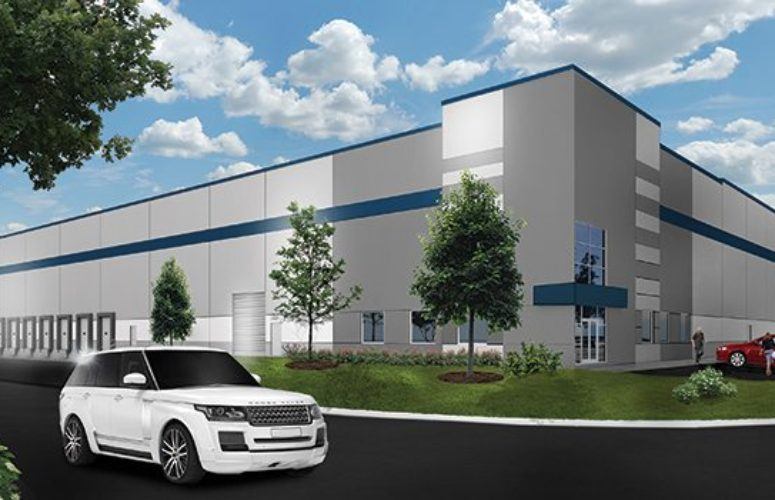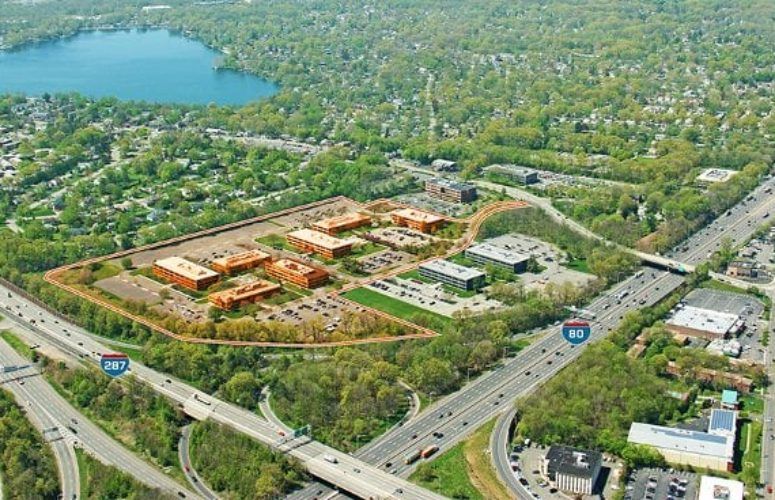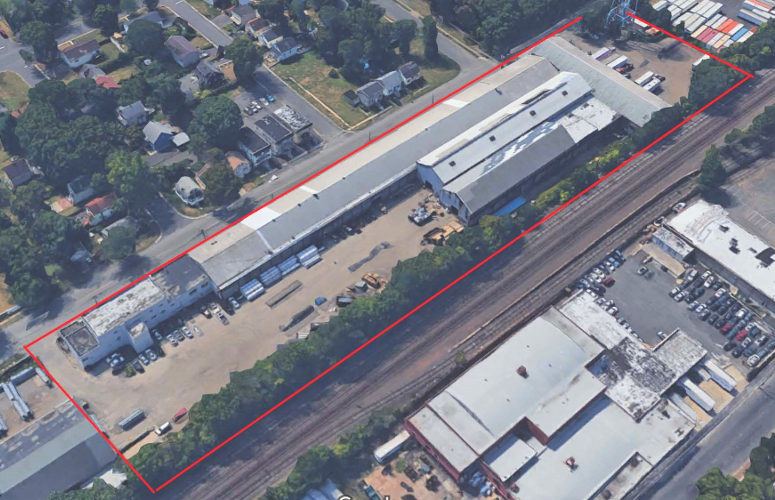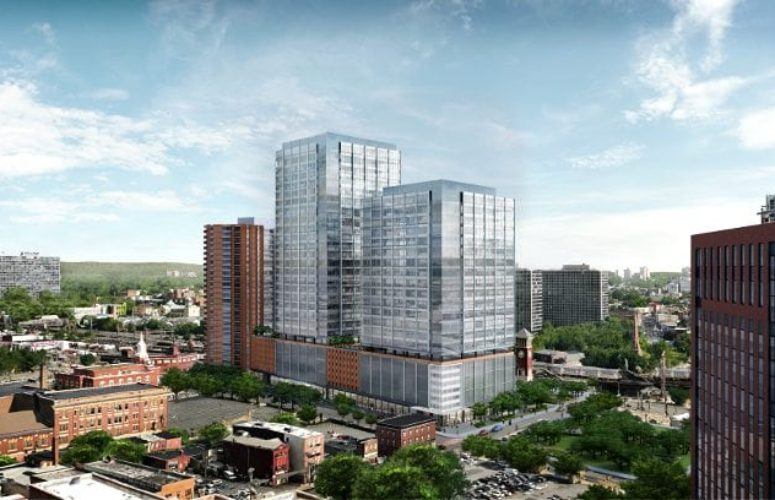
Bullish on Industrial Real Estate
E-commerce and location are key drivers as demand outstrips supply.
By Eric C. Peterson, Contributing Writer On Apr 18, 2016In a word, industry experts are bullish on industrial real estate in New Jersey. The old adage, “location, location, location” was never more appropriate, given the Garden State’s proximity within the densely-populated tri-state area and along the heavily traveled I-95 corridor. In that context, the emergence of e-commerce has been a boon for the state.
As a result, “the market has done exceptionally well over the past two years,” says David Knee, senior managing director of JLL, East Rutherford. He points to “strong leasing velocity – some ‘big box’ space has been leased.” Reflecting on nearly three decades in the business, Knee terms current vacancy rates “historically low.”
Part of the vacancy rate equation is that “developers have shown restraint in terms of speculative construction,” Knee says. “While there has been some, we’ve had a lot of pre-leasing. There hasn’t been saturation of competing properties.”
“Net absorption is outstripping delivery of new properties by three to one,” says Mark Petrella, senior director for Cushman & Wakefield, Edison. “For 2015, there was 4 million square feet under construction and 12.5 million square feet of net absorption.”
For 2016, “another 5.8 million square feet is in the pipeline,” says Jeff Hipschman, senior managing director for CBRE, Saddle Brook. “What’s interesting about new construction is that the average lease-up time is six months. The average for the overall market is 10.5 months.”
Other trends Knee is seeing: Historic rental rates for Class A space; a flight to quality; emergence of e-commerce, spearheaded by Amazon, “from a zero footprint to more than 3 million square feet and growing”; and a consolidation of landlords, notably Prologis acquiring KTR and the Morris Realty portfolio.
Another sign of e-commerce’s emergence: “Some traditional brick-and-mortar retailers are going to omni-channel distribution, spending more money on their e-commerce network,” Petrella notes. Also, “shippers and third-party logistics (3PL) companies are servicing that continued migration to e-commerce. That’s probably the biggest story from an incremental demand standpoint.”
The market’s tightness has resulted in a new focus for some on the development side. With the low vacancy and high rents, “we’re purely focused in infill opportunities in tight markets – looking at sites requiring building demolition, some environmental remediation and geo-technical work,” says Jeff Milanaik, principal of Bridge Development Partners, Parsippany. While that approach might incur higher development costs “that we perhaps couldn’t incur three or four years ago, the higher rental rates resulting from the tightening market allows you to absorb those costs,” he says.
For South Jersey, “it took several years for prospect and leasing activity to pick up, and today, we’re experiencing tenant expansions, startups re-entering the market, and solid 20,000- to 100,000-square-foot requirement activity,” says James Whitesell, vice president-leasing for Whitesell Co, Delran. “I see buildings with full parking lots – a sign of resonate staying power.
“For a commercial real estate operator, there will always be work to shore up leases on key properties,” Whitesell says. “We’re seeing longer-term commitments and companies investing in their spaces.”
As to e-commerce, “accessibility to Manhattan and the tri-state market is driving distribution,” Hipschman says. “Same-day, next-day delivery is driving demand, and New Jersey has unparalleled proximity.” E-commerce has even taken hold in food distribution, he notes, with “Pea Pod, Blue Apron and others delivering food daily to consumers.”
Also, “some companies previously in New York City have been priced out of that market and have relocated to New Jersey,” says Brian Hosey, regional manager for Marcus & Millichap, Elmwood Park. One example: Dumbo Moving & Storage recently bought a warehouse in Newark, which “speaks to the shift,” Hosey says.
Regarding tight vacancy rates, it was 7.8 percent at the end of 2015, according to Hipschman, “the lowest rate we’ve seen since 2007, pre-recession. And that was accomplished with a net inventory addition of 9.6 million square feet over that period.” C&W’s Petrella, meanwhile, pegs the statewide vacancy rate even lower: 6.4 percent.
Regarding submarkets, New Jersey Turnpike Exit 8A quickly comes to mind. According to Petrella, the vacancy rate is 6.2 percent, with 2015 absorption of approximately 1.9 million square feet. “Today, there are probably 5 million square feet of near-term requirements, with two-thirds of that likely to be executed over the next several quarters,” he says.
By Hipschman’s numbers, meanwhile, 8A’s vacancies were at 6.8 percent at the end of 2015, down from 10 percent a year earlier. For vacancies in other submarkets, Linden-Elizabeth dropped from 9.3 percent to 5.7 percent year-over-year, and the Hudson waterfront went from 9.5 percent to 6.9 percent, according to Hipschman.
The Meadowlands is likewise strong, with a 7.1 percent overall vacancy, according to Petrella, in a market tilted toward landlords. “Rents are up significantly. Typically, users are smaller in the Meadowlands, with much absorption in the 50,000- to 100,000-square-foot tenant base. That sector accounted for 55 percent of recent deal activity,” Petrella says.
Indeed, from the tenant perspective, “they are likely to have to be prepared not to get free rent, and not to get the same tenant improvement allowance they are accustomed to getting,” Knee predicts. “It’s really shifted toward a landlords’ market.”
Other markets that have done well include “Exit 12/Port South, which has seen tremendous activity,” according to Knee. “Fairfield and Edison have done very well – and we’re seeing other markets catch on.”
Whitesell notes a shift impacting South Jersey: “Our market has benefited from solid prospect activity from Central and Northern New Jersey, due in part to the Turnpike widening project between Exits 6 and 9. Now, blurred boundary lines exist between Burlington, Mercer and Middlesex counties. Exit 6 is now positioned as a major Northeast/Mid-Atlantic distribution hub.”
Overall, the 4th quarter of 2015 “was the fourth consecutive quarter with leasing velocity over 5 million square feet,” Hipschman says. “Total velocity for 2015 was 24.4 million square feet, a 22 percent increase over 2014.”
Regarding new construction, Bridge Development Partners is one of the more active companies, with its focus on infill projects. A key one is the 1.3-million-square-foot, $180-million ePort Logistics Center in Perth Amboy. The company is also under contract for a 70-acre site just north of it, according to Milanaik.
Overall, Bridge has 4.5 million square feet in the pipeline. The company: has approvals for 193,000 square feet in Wood-Ridge/Carlstadt; is under contract and has approvals for 650,000 square feet on Delancy Street in Newark; is redeveloping the 263,000-square-foot former Tuscan Dairy building off I-78, which is “seeing a lot of leasing activity;” has approvals for 206,500 square feet at Exit 12 in Carteret; and is under construction for 490,000 square feet, and is seeking approvals for 264,000 square feet, at Exit 8A.
Other projects statewide include Rockefeller Development Group’s 930,000-square-foot Cranbury Station Park in Cranbury, said to be seeing substantial leasing activity. Additionally, Matrix Development’s new 551,000-square-foot building at 8A in South Brunswick is said to be on the verge of lease-up.
Meanwhile, Heller Industrial Parks began construction of a 285,000-square-foot building in South Brunswick just this past September. It is already pre-leased to All-Ways Forwarding, months before its slated completion.
Other major recent leases include: Home Depot’s 772,000-square-foot renewal at 8A; Serta’s commitment for 460,000 square feet in Carteret/Avenel; and National Retail Transportation’s 439,000-square-foot lease on the Hudson Waterfront.
In Edison, JLL’s Knee completed a 570,000-square-foot lease with LIST Logistics, a 3PL company, for a vacant building recently constructed by JG Petrucci and subsequently acquired by JP Morgan. CBRE, meanwhile, recently arranged a sublease with Garden State Cold Storage at a 278,900-square-foot Class A distribution center within Port Carteret. NAI Hanson completed a long-term lease for 145,000 square feet with light rail vehicle producer Kinkisharyo International in Piscataway.
The strength and tightness of the industrial market has also made it an investment target of choice. “Industrial activity has been strong for whatever is for sale,” Knee says. “Properties are selling at historically low cap rates, and Class A is really the knight in shining armor.”
“Cap-rate compression continues unabated,” Petrella adds. “What’s interesting in this cycle is leasing fundamentals have worked in lock-step with cap-rate compression. That wasn’t necessarily the case in previous expansions.”
Interestingly, “one reason the market is hot for industrial is cap-rate compression for apartment buildings,” notes Marcus & Millichap’s Hosey. “That has driven prices up for those properties, so investors are looking for alternatives – and industrial is a great alternative with slightly better yields. Additionally, the banks like the product because it’s easy to finance.”
Other factors making industrial attractive, and therefore valuable, according to Hosey: Increased demand for industrial space; more local shipping and distribution along the I-95 corridor; and with the cost of production going up in China and the relative cost in the US going down, “there’s renewed demand for local production centers.”
Finally, “many are investing in real estate here because of uncertainty around the world – the Asian and US stock markets, Brazil’s economy, and so forth,” Hosey says. “For wealthy people around the world, real estate is a great place to invest, and low interest rates are making this a lot easier.”
Going forward, “despite the many interpretations of where the US economy is heading, we’re optimistic 2016 will prove to be another strong year for industrial real estate,” Whitesell predicts. “We continue to experience solid prospect and leasing activity, and it’s difficult to envision another recession at this point.”
“The only downside would be the users’ and tenants’ side,” Knee says. “The options are very limited, especially for big box space in the half-million-square-foot range. There’s going to be tremendous pricing pressure on tenants, who will see rents they never expected to see.”
From a developer’s standpoint, Bridge Development Partner’s Milanaik is “bullish on the market. These projects take two years from inception to approvals, so we’re always looking over the horizon. Right now, the vacancy rate is the lowest it’s been in years, and looking at demand as a barometer, I would categorize the market as strong and consistent.
“There are few opportunities to bring inventory to the market,” he concludes. “For the time being, even though demand is strong and consistent; it’s far outstripping the supply. That will continue to impact the market through 2016.”
Related Articles:






